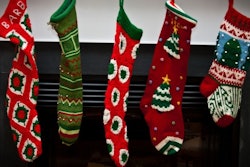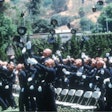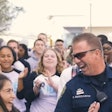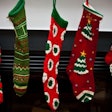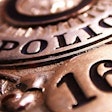
As you settle into this snowy, stormy season your thoughts should also migrate toward winter patrol tactics. Now for some in the sunny Southeast (most years) this may only mean a light jacket. To those of us who live where it gets downright frigid, you need to drag out a whole new wardrobe just for this time of year. Take a few minutes to prepare and think what you need to do to be tactically safe and comfortable.
The longer hours of darkness are the times to revisit your flashlight and its needs. In years gone by, we all had the clumsy long black aluminum tube flashlights with gobs of batteries. They were great for nearly everything imaginable up to and including anchoring a small boat. Now our lights have advanced to become smaller and less menacing devices to brighten the night. They strobe, they have adjustable beams, and are probably the most advanced lighting system since Neanderthals grabbed the first torches. But these modern marvels do require regular maintenance and care.
The more you use them the less juice in the batteries, grab a couple extra and have in the patrol bag. For those with the odd sizes, keep spares handy, they are not always available at the local stores opened on the night shift. Got an extra light? I keep a small micro light on my credentials and building entrance card that stays around my neck under my shirt. There are some great micro lights that can be attached to your keys, your gear bag, and so forth just in case. Sometimes the little ones even serve as a tactical advantage. Light discipline is another often forgotten skill that we skim over. Don't give the bad guys an advantage over you.
If you have a light on your handgun, the same thing applies for extra batteries: one size may not fit all. Also practice with your handgun and light under all conditions. No cheating by removing it at the range to get a faster draw or making it any easier on yourself. Train just the way you work.
To glove or not to glove is often the biggest question. Most cops do not want to lose their tactical dexterity. I know some whot are willing to risk blue fingers to have an advantage in deploying any of their equipment. Again, some use their weak hand, some use fingerless gloves, and some hope for the best. I do not know what your preferences are; you must decide. However, make sure you train with what you plan to use. If you are going gloved, head to the range and practice with gloves on. Also practice using all of your equipment from ink pen to handcuffs with the gloves on.
Jackets and long johns are other considerations. Several officers will wear their winter jackets and some try to go tactical in their shirtsleeves. You are the decision-maker here. Today's cops have a distinct advantage with the new wicking, high-tech performance underwear. Some offer extremely good working temperature ranges. They can be pricey but well worth the investment. Whatever you wear, again practice deploying and securing all of your equipment with whichever ensemble you choose. Extra layers of clothing can affect your range of motion.
Proper winter footwear is paramount. I was bemused recently when I heard of a state agency that did not (at first) allow their troopers to wear boots. Luckily, someone at the head shed came over to the side of common sense. Cold and wet weather is miserable enough, but when your tootsies are cold, you are that much more miserable.
Like with underwear, new materials make footwear a warm and comfortable item now. But don't forget to choose one with the right sole; good footing on slick surfaces is a safety consideration as well. Most have soles that are worthy of climbing most mountains and great for tracking "stuff" into the office and car. Look at the entire boot to determine the one you will perform best in.
One final thing. With more hours of darkness and low visibility weather coupled with it, there is one more safety consideration. Make sure you wear your ANSI high-visibility vest. I know they don't look tacticool, but it will prevent you from injury and death in or around the roadway. So enjoy winter weather (yes, some folks actually like this stuff). Tactics and safety can be seasonal as well.








